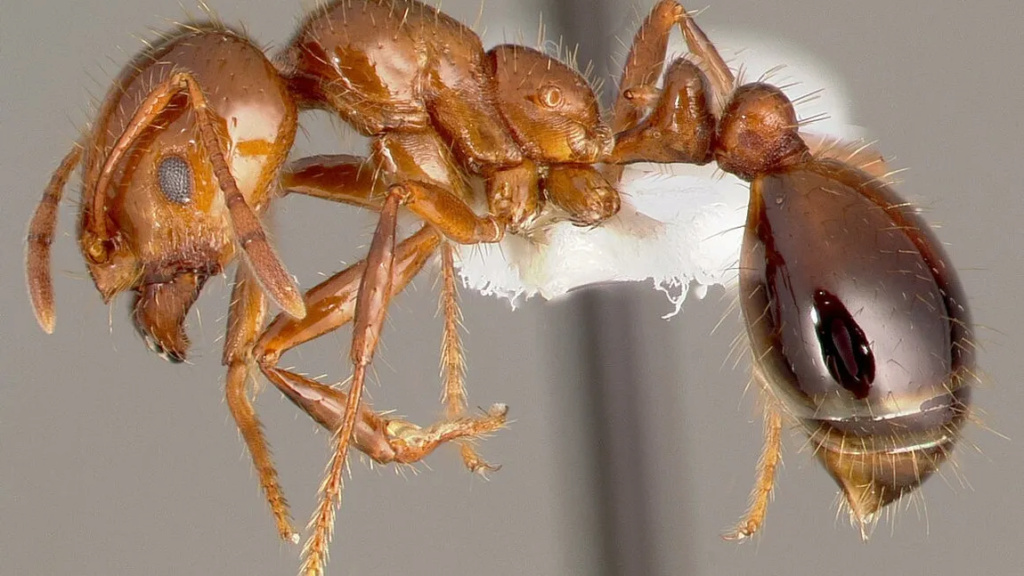The fearsome fire ant, capable of devouring its victims to the bone
The floor of the Amazon rainforest is strewn with a fearsome pest: the fire ant, endowed with a "fiery sting" and capable of devouring its victims to the bone.
Solenopsis invicta , more commonly known as the fire ant, is native to South America. Through cargo ships, this species fortuitously migrated to different countries around the world, such as the United States in 1930 or Australia in 2001. It is now considered there as an invasive species and harmful to humans. and local species, and is extremely difficult to eradicate.
Fire ants are one of 266 species of Solenopsis ants , a very common genus of ants, but are far more aggressive than most. They are reputed to have one of the most irritating venoms in the world. Its "burning" bites indeed cause severe pain, itching, or even more in some cases. Lethal to small animals such as birds, the fire ant sting is not normally lethal to humans, but some medical reports have reported several deaths caused by anaphylactic shock following a Solenopsis invicta bite .
A fortress of ants attacked by an army! - WILD ZAPPING
Fire ants attack in groups. When they go after a prey, they climb on it and release pheromones which attract the rest of the colony. Hundreds or even thousands of individuals then arrive in order to protect their colony. This army of insects blindly follows these pheromones, which constitute a veritable chemical path drawn by the “scout” ants.
Unlike many other species, Solenopsis invicta does not bite, it stings. If its attack begins with a bite which, thanks to powerful mandibles, will allow it to cling to its victim to sting it several times, fire ants have a stinger similar to that of wasps. It is this physical attribute that will allow it to inject its venom under the skin of its prey, which will then attack and destroy the cells during a phenomenon called "lysis" . The contents of the destroyed cells then spread, allowing the venom to spread and destroy more.

Fire ants, in addition to being an invasive species, are very dangerous predators of the eggs of other insects, even other ants. Scarlet workers wiggle their abdomens in order to release this destructive venom into the air in the form of droplets.
https://www.nationalgeographic.fr/animaux/2020/12/la-redoutable-fourmi-de-feu-et-sa-piqure-ardente?fbclid=IwAR3SzDAWlM3KQN7UkQit5lyAWxKeT1RU_IAsRcPwthYw60qdX7dYOomkREw


